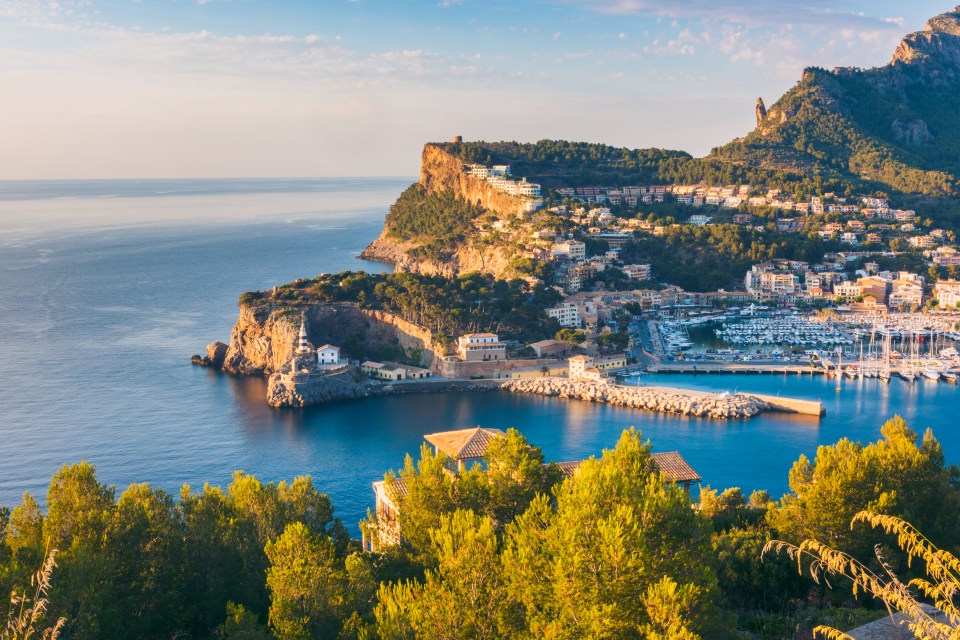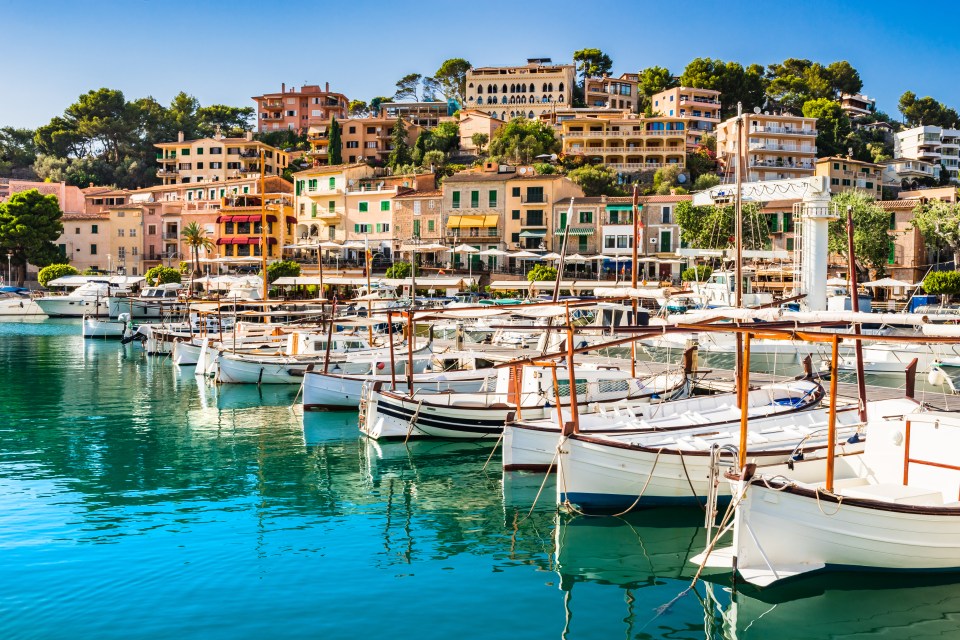This is an audio transcript of the FT News Briefing podcast episode: ‘Displacement pushes Lebanon to the brink’
Sonja Hutson
Good morning from the Financial Times. Today is Thursday, October 3rd. And this is your FT News Briefing.
The UK housing market gets a boost from lower mortgage rates, and most of the world’s new wind and solar projects are being built in China. But Beijing still has a soft spot for coal. Plus, the conflict in Lebanon has forced a million people out of their homes.
Malaika Kanaaneh Tapper
The scenes on the streets in Beirut are really post-apocalyptic. It’s really impossible to overstate the scale and the drama of this displacement.
Sonja Hutson
I’m Sonja Hutson, and here’s the news you need to start your day.
[MUSIC PLAYING]
The UK housing market is really heating up. The number of home sales rose last month by 25 per cent compared with the same time last year, according to the property website Zoopla. That is the fastest rate since the end of pandemic lockdowns in 2021. You can thank lower interest rates for the bump. They’ve sent mortgage rates to their lowest level in over a year. So a bunch of people who have been waiting on the sidelines ready to buy a home, but not when mortgages are so expensive they’re jumping into the market now. The supply of homes is on the rise too. The number of new properties going up for sale rose by 16 per cent annually.
[MUSIC PLAYING]
More than a million people in Lebanon have been displaced in recent weeks, since attacks between Hizbollah and Israel escalated dramatically. And the country is already in the grips of a years-long economic crisis. Malaika Tapper has been following the situation for the FT and she joins me now. Hi, Malaika.
Malaika Kanaaneh Tapper
Hi, How are you?
Sonja Hutson
Doing well, thanks. So what have you seen so far of people fleeing their homes?
Malaika Kanaaneh Tapper
Yeah, I mean, the scenes on the streets in Beirut are really post-apocalyptic. It’s really impossible to overstate the scale and the drama of this displacement. When you walk around neighbourhoods that are normally upscale, affluent shopping districts, you are finding people sleeping on dirty blankets on the sidewalks. Suddenly you see entire families spending the nights under the open skies as drones circle overhead. So the situation is pretty disastrous.
Sonja Hutson
Yeah, sounds like it. And just how widespread is the displacement across Lebanon?
Malaika Kanaaneh Tapper
The displacement is incredibly widespread almost everywhere. South of Beirut is no longer considered safe by most of its residents. So there’s basically been three waves of displacement that Lebanon has seen this year. The first began soon after October 7th, when Hizbollah and Israel began trading strikes over the southern border — 110,000 people were displaced from there. And then on September the 23rd, Israel launched its massive bombing campaign of southern Lebanon, and huge numbers of people suddenly were sent on the run, fleeing north and to Beirut. And then Friday the 27th, Israel launched a massive bombing campaign on the southern suburbs of Beirut and issued evacuation orders for many neighbourhoods. So I think that this is only going to exacerbate the crisis further.
Sonja Hutson
Now, I mentioned Lebanon’s brutal economic crisis earlier. Can you tell me a little bit more about what was going on in the country before this conflict?
Malaika Kanaaneh Tapper
Yeah. Lebanon has seen crisis after crisis over the past five years. In 2019, the country was hit with a devastating economic crisis, which saw the collapse of the country’s currency and a huge swath of the population had their entire bank savings wiped out. And the country is far poorer than it was five years before. Now, even before 2019, the country was grappling with the largest population of Syrian refugees in the world. There are over 1.5 million registered Syrian refugees who fled their country’s civil war starting in 2011. That population has placed a massive burden on the Lebanese state. And on top of that, in 2020, Beirut was rocked by a massive explosion in the city’s port, which killed over 200 people and destroyed homes and neighbourhoods across the city. So the country is really not in a place to deal with another large-scale crisis.
Sonja Hutson
So if Israel ramps up its ground invasion and air strikes on Hizbollah, where does that leave people in Lebanon? Can the country’s public services and infrastructure handle a full-scale war?
Malaika Kanaaneh Tapper
Now, I think that the state is already deeply overwhelmed by what has happened in the past year and especially over the past two weeks. The minister responsible for coordinating the government’s response told me it’s basically a race against time. They need international support. They’ve put out, along with the UN, an appeal for $426mn to support civilians affected by the crisis. Without international support and international intervention, I think the picture for the Lebanese state’s ability to grapple with this crisis looks incredibly grim.
Sonja Hutson
Malaika Tapper covers Lebanon for the FT. Thanks for your reporting, Malaika.
Malaika Kanaaneh Tapper
Thank you.
[MUSIC PLAYING]
Sonja Hutson
It looks like the European Union is going to delay its controversial anti-deforestation law. The legislation was supposed to ban goods that contribute to forest degradation from entering the bloc. So that affects things like cocoa, coffee and palm oil. The law was set to come into effect at the end of December, but following major backlash from businesses up and down the supply chain, the European Commission has basically said, look, this isn’t going away, but you can have another year to get ready for it. The EU will vote on the postponement before the end of the year. And if lawmakers do decide to delay the legislation, they’ll face a whole new battle with environmental groups.
[MUSIC PLAYING]
For years, China has been the world’s biggest polluter. It accounts for about 30 per cent of global emissions. But that might be changing. A vast majority of new solar and wind power projects are now based there. Here to explain is the FT’s Ed White. Hey, Ed.
Edward White
Hi.
Sonja Hutson
So tell me a little bit more about China’s jump into wind and solar.
Edward White
So China’s drive into renewable energy has been really building for several decades, but it’s probably become more pronounced in the past five or six years when you’ve seen the scale of the industry here in China. And so in terms of individual renewable energy projects, in China’s western Xinjiang province, there’s actually a solar project that is about the same size as Manhattan. And then think about the size of the Eiffel Tower, in China’s Hainan, an island, is a wind turbine that reaches about the same height. So the scale of these projects is just huge. The other thing that’s happened in the last few years with the economies of scale that China now produces at, is that the cost of these technologies has just come down so rapidly. And that’s just meaning that China can continue to make bigger and bigger projects at lower and lower costs.
Sonja Hutson
Yeah, it’s so crazy to think about just how big a Manhattan-sized solar field is. How exactly do these massive projects fit into Beijing’s overall green energy goals?
Edward White
Well, it’s quite interesting. So at a very high level, China has two really important goals. That is to decarbonise the economy here completely by 2060 and also to hit peak emissions in a much shorter timeframe. So that’s around 2030. Xi Jinping, the country’s very powerful leader, set those goals about four years ago now. And since that policy was set, China has really been going all in on high-tech green manufacturing. And so from a policy point of view, this is very much directed from the top. And we’re now seeing this as a not just a big domestic industry, but also for exports and for foreign direct investment overseas as well.
Sonja Hutson
So obviously, this is all good news for the planet. But I’m curious also, what could get in the way of Beijing actually reaching those targets?
Edward White
So if you step back a little bit, the key thing here is that China is still massively reliant on coal. Coal is what underpins the electricity system, which is what powers all of the factories that the world relies on. And so to get rid of all the coal in the Chinese electricity system, yes, you need to build out a lot of renewables. You need to build out a lot of transmission infrastructure. So that’s one part of it. But actually dealing with the coal sector is going to take a lot of work because you’ve got a lot of jobs, you’ve got a lot of state interests and a lot of vested interests in terms of money and investment that has gone into that sector over a long time. So that’s going to be a real challenge for Beijing. But in saying that despite all of these challenges that might get in the way, actually the country is very much on this path now.
Sonja Hutson
OK. So, Ed, you sound pretty optimistic about all of this. If China does manage to pull off this U-turn from major polluter to green energy leader, what does that mean for the global economy?
Edward White
I think at a fundamental level, you have to see this as a real once-in-a-generation shift for China and for the world. And so the impacts and the fallout from that are really far-reaching. I mean, for China itself, a key motive here is energy independence. So that means that you’re going to end up being less reliant on things like oil from the Middle East or gas from Russia. So that completely changes international geopolitics. It also means that because of the scale that China’s doing things on, you are going to get and you’re already really seeing China dominate clean technology supply chains, clean technologies themselves. And so that creates a lot of problems for people outside of China that are at the same time trying to use lists of products coming from China. Their own industries are being undercut by some of China’s champions and China’s biggest companies in the sector.
Sonja Hutson
Ed White is a China correspondent for the FT. Thanks, Ed.
Edward White
Thank you.
[MUSIC PLAYING]
Sonja Hutson
Before we go, there is still time to snag 50 per cent off a standard annual digital subscription for the FT. If you like what you hear on the show, that subscription will give you access to even more in-depth coverage of markets, geopolitics and global business. You can learn more about the discount at ft.com/briefingsale. That’s ft.com/briefingsale.
This has been your daily FT News Briefing. Check back tomorrow for the latest business news.
[MUSIC PLAYING]















































































































































You must be logged in to post a comment Login